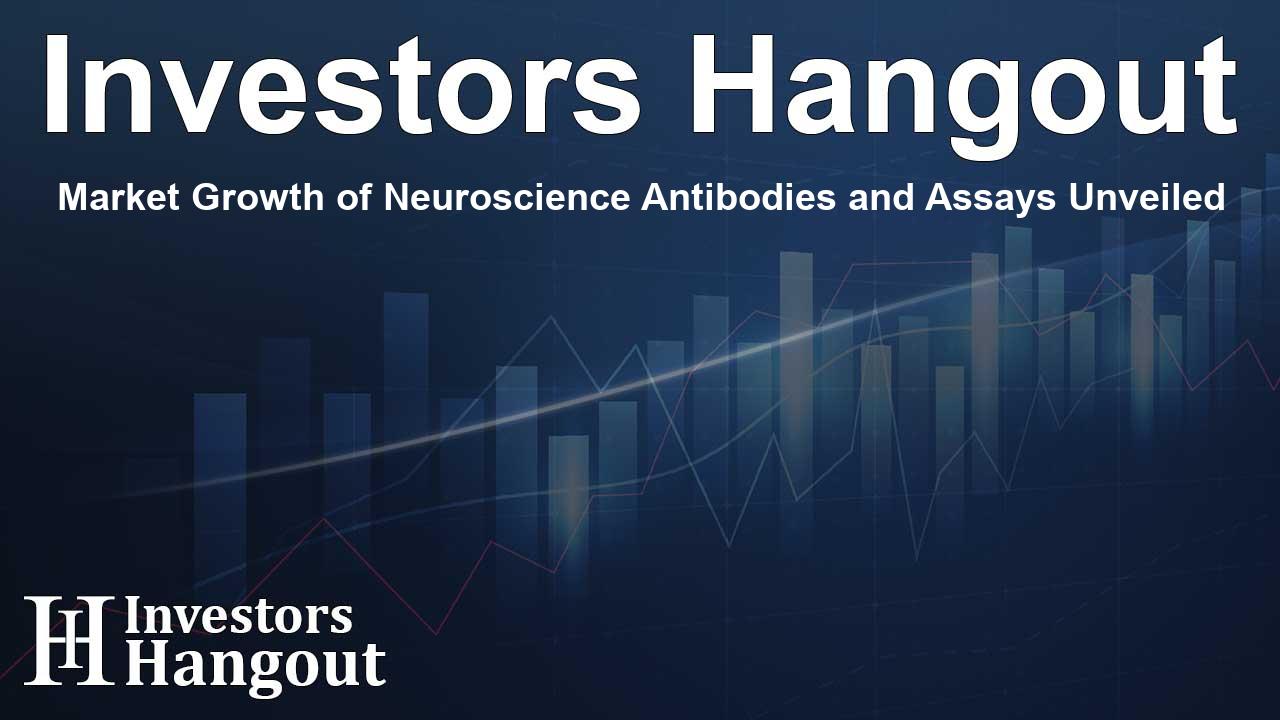Market Growth of Neuroscience Antibodies and Assays Unveiled

Overview of the Neuroscience Antibodies and Assays Market
The neuroscience antibodies and assays market is on a promising trajectory, projected to increase significantly in the coming years. With an estimated growth of USD 2.20 billion from 2024 to 2028, it highlights a remarkable compound annual growth rate (CAGR) of over 9.64%. This growth is primarily fueled by the increasing prevalence of neurological disorders worldwide, leading to heightened demand for advanced diagnostic and therapeutic tools.
Key Drivers of Market Growth
Neuroscience antibodies and assays have become essential tools for conducting molecular neuroscience research. They facilitate the detailed characterization of proteins that are crucial for understanding various neurological conditions. Leading biotechnology companies are at the forefront of developing innovative antibody and assay kits that cater to diverse needs in both academic and pharmaceutical sectors.
Significance of Advanced Tools in Neurology
These tools are not only vital for therapy development but also significantly contribute to enhancing healthcare outcomes. By allowing for precise localization and identification of specific proteins related to neurological functions, these assays prove indispensable in diagnosing conditions such as Alzheimer’s and Parkinson's diseases. The advancements in immunochemistry and proteomics are spurring collaborations between private sector firms and pharmaceutical companies, all aimed at fortifying research and therapeutic avenues in neurology.
Challenges Facing the Industry
Despite the optimistic growth outlook, the neuroscience antibodies and assays market is not without its challenges. The high cost of developing these antibodies represents a significant barrier for various vendors in the market. For instance, the costs associated with producing polyclonal antibodies can reach approximately USD 1,000, while monoclonal antibodies may cost up to USD 10,000, and recombinant antibodies can even exceed USD 50,000. The diverse pricing can deter some companies from investing in R&D, especially if the projected sales volumes are low.
Impact of Clinical Trials and Market Structure
Moreover, the landscape of clinical trials has seen vast improvements over the years. Factors such as better organization of trials, participant recruitment efficiency, and the proliferation of skilled investigators have led to a surge in trial activities, particularly in neuro-related fields. As a result, the utilization of neuroscience antibodies and assays has expanded, offering faster disease analyses and potentially more manageable trial sizes.
Segmentation Overview
The neuroscience antibodies and assays market can be segmented into several categories to better understand its dynamics. Key segmentation can be by:
- Type: Consumables, Instruments
- Application: Pharmaceutical and biopharmaceutical companies, Academic and research institutes, Hospitals and diagnostic centers
- Technology: Immunochemistry/immunoassays, Molecular diagnostics, Clinical chemistry
- Geography: The market has a broad geographical reach, encompassing regions such as North America, Europe, and Asia.
How AI is Transforming the Market
Artificial Intelligence (AI) technologies are playing a transformative role in redefining market strategies within the neuroscience antibodies and assays sector. AI-powered analytic tools are facilitating deeper insights into market trends, assisting companies in identifying growth opportunities, and optimizing their research priorities to align with emerging healthcare needs.
Future Outlook
As the relationship between AI advancements and neuroscience research strengthens, the potential for new therapeutic discoveries also increases. Continued collaboration among research institutions, healthcare organizations, and biotechnology companies is expected to bolster the market further, enabling innovative solutions tailored to existing and future neurological challenges.
Frequently Asked Questions
What are neuroscience antibodies and assays used for?
Neuroscience antibodies and assays are utilized primarily for identifying and characterizing proteins related to neurological conditions, aiding in both research and therapeutic developments.
What factors are driving the growth of this market?
The growth is primarily driven by the increasing incidences of neurological disorders and advancements in diagnostic tools and methodologies.
What challenges does the market face?
High development costs of antibodies and potential limitations in research funding present significant challenges for the market.
How is AI affecting the neuroscience research landscape?
AI technologies provide enhanced analytical capabilities, leading to quicker insights into market trends and better understanding of neurological conditions.
Which regions are seeing the most market activity?
The market is particularly active in North America, Europe, and Asia, with extensive developments in various neuroscience research areas.
About The Author
Contact Riley Hayes privately here. Or send an email with ATTN: Riley Hayes as the subject to contact@investorshangout.com.
About Investors Hangout
Investors Hangout is a leading online stock forum for financial discussion and learning, offering a wide range of free tools and resources. It draws in traders of all levels, who exchange market knowledge, investigate trading tactics, and keep an eye on industry developments in real time. Featuring financial articles, stock message boards, quotes, charts, company profiles, and live news updates. Through cooperative learning and a wealth of informational resources, it helps users from novices creating their first portfolios to experts honing their techniques. Join Investors Hangout today: https://investorshangout.com/
The content of this article is based on factual, publicly available information and does not represent legal, financial, or investment advice. Investors Hangout does not offer financial advice, and the author is not a licensed financial advisor. Consult a qualified advisor before making any financial or investment decisions based on this article. This article should not be considered advice to purchase, sell, or hold any securities or other investments. If any of the material provided here is inaccurate, please contact us for corrections.
